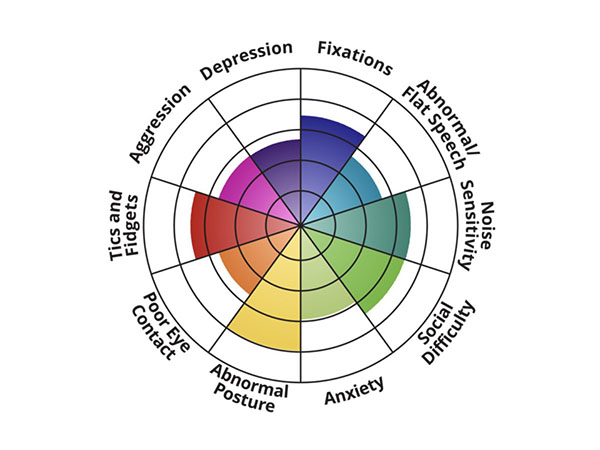April is Autism Acceptance Month, and we’re excited to celebrate! At AbleLight, we are honored to celebrate the autistic individuals that we support every day, but this month holds a special significance.
Today, we’re diving deeper into understanding the unique experiences within the autism community and looking at tools like the autism wheel. The autism wheel has become an accepted way of describing an individual’s autistic experience and is replacing the concept of the spectrum—for some very good reasons.
The spectrum
Spectrums are usually represented by a flat line with different values on each end. With autism, the values have typically been “low-functioning” on one end and “high-functioning” on the other. (Or, in other words, “more autistic” and “less autistic.”) And an autistic person would be labeled somewhere along that spectrum as a way of describing their autism.
The idea of autism being a linear spectrum with low-functioning at one end and high-functioning at the other end simplifies the autistic experience, and this can be damaging to people’s perception and understanding of autism. These functioning labels often fail to recognize the unique strengths and weaknesses of an autistic individual. People who are considered “low-functioning” can be dismissed or denied opportunities, while those considered “high-functioning” may be denied support services they need.
Introducing the autism wheel

The autism wheel is a helpful tool that does a great job of visually representing how autism may appear in different people. While no graphic or tool can ever fully describe a person’s experience, the wheel provides a more in-depth way to understand the unique complexities at the individual level.
The autism wheel features a collection of potential autistic traits, such as sensory sensitivities, special interests, anxiety, fidgets, social challenges, and more – and lets each person express the degree to which they experience them.
This tool can help individuals with autism and the people around them understand their unique needs. Someone who is considered “high-functioning” may appear to not need as much support, but when we look at their wheel we may see that they don’t struggle in social situations, but they have difficulties with executive function. This person is no more or less autistic than any other autistic person, they just need more support in some areas than others.
Everyone’s autism wheel will look a little different – and that’s the way it’s supposed to be. No two people are the same, and everyone’s individual autistic experience should be recognized, celebrated, and supported.
At AbleLight, we offer services designed to help people with developmental disabilities achieve their full potential, including: Supported Living, Day Programs, Employment Supports, and much more!
